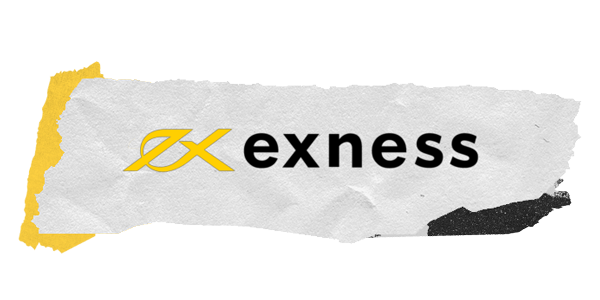Andreessen Horowitz a16z Fuels AI and Biotech Innovations with Strategic Investments
Tech leaders respond to the rapid rise of DeepSeek
All these indicate the commitment a16z has in shaping the future of technology and healthcare through strategic investments. Both platforms use Stability AI’s models to bring creators’ visions to life and Story’s blockchain technology to enable provenance and attribution throughout the creative process. These real-world applications highlight how creators can safeguard their intellectual property while thriving in a shared creative economy. Raspberry AI offers brands and manufacturing creative teams technology solutions, which can help accelerate each stage of the fashion product development cycle to increase speed to market and profitability while reducing costs. Andreessen Horowitz, or a16z, is one of the leading AI investors and targets only innovative startups. They participated in the round that funded Anysphere on January 14, 2025, with a total sum of $105 million for an AI coding tool known as Cursor, whose valuation has reached $2.5 billion.
The startup was co-founded by Chief Executive Officer and serial entrepreneur Munjal Shah and a group of physicians, hospital administrators, healthcare professionals and AI researchers from organizations including El Camino Health LLC, Johns Hopkins University, Stanford University, Microsoft Corp., Google and Nvidia Corp. PIP Labs, an initial core contributor to the Story Network, is backed by investors including a16z crypto, Endeavor, and Polychain. Co-founded by a serial entrepreneur with a $440M exit and DeepMind’s youngest PM, PIP Labs boasts a veteran founding executive team with expertise in consumer tech, generative AI, and Web3 infrastructure. The startup has also created other AI agents for tasks like pre- and post-surgery wound care, extreme heat wave preparation, home health checks, diabetes screening and education, and many more besides. The startup said its AI Agent creators include Dr. Vanessa Dorismond MD, MA, MAS, a distinguished obstetrician and gynecologist at El Camino Women’s Medical Group and Teal Health, who helped to create an AI agent that’s focused on cervical cancer check-ins and enhancing patient education. According to the startup, the objective of these AI agents is to try and solve the massive shortage of trained nurses, social workers and nutritionists in the healthcare industry, both in the U.S. and globally.
How Global Brands Use Geo-Targeting To Increase Conversions; Interview With The CMO Of Geo Targetly
Holger Mueller of Constellation Research Inc. said Hippocratic AI is bringing two of the leading technology trends to the healthcare industry, namely no-code or low-code software development and AI agents. The launch is a bold step forward in healthcare innovation, giving clinicians the opportunity to participate in the design of AI agents that can address various aspects of patient care. It says clinicians can create an AI agent prototype that specializes in their area of focus in less than 30 minutes, and around three to four hours to develop one that can be tested. Shah said the last nine months since the company’s previous $50 million funding round have seen it make tremendous progress. During that time, it has received its first U.S. patents, fully evaluated and verified the safety of its first AI healthcare agents, and signed contracts with 23 health systems, payers and pharma clients.
- Holger Mueller of Constellation Research Inc. said Hippocratic AI is bringing two of the leading technology trends to the healthcare industry, namely no-code or low-code software development and AI agents.
- Those investments highlight the commitment of the group to using AI to address important issues and are also focusing on how AI can improve different industries, including healthcare and consumer services.
- But with U.S. companies raising and/or spending record sums on new AI infrastructure that many experts have noted depreciate rapidly (due to hardware/chip and software advancements), the question remains which vision of the future will win out in the end to become the dominant AI provider for the world.
In order to ensure its AI agents can do their jobs safely, Hippocratic AI says it only works with licensed clinicians to develop them, taking steps to verify their qualifications and experience first. Once clinicians have built their agents, they’ll be submitted to the startup for an initial round of testing. Through the Hippocratic AI Agent App Store, healthcare organizations and hospitals will be able to access a range of specialized AI agents for different aspects of medical care.
Your vote of support is important to us and it helps us keep the content FREE.
By incorporating this wisdom into its AI agents, it’s making them safer and improving patient outcomes, it said. Crucially, any agent created using its platform will undergo extensive safety training by both the creator and Hippocratic AI’s own staff. Every clinician will have access to a dashboard to track their AI agent’s performance and use and receive feedback for further development.
Meanwhile, Kristina Dulaney, RN, PMH-C, the founder of Cherished Mom, an organization dedicated to solving maternal mental health challenges, helped to create an AI agent that’s focused on helping new mothers navigate such problems with postpartum mental health assessments and depression screening. The startup was initially focused on creating generative AI chatbots to support clinicians and other healthcare professionals, but has since switched its focus to patients themselves. Its most advanced models take advantage of the latest developments in AI agents, which are a form of AI that can perform more complex tasks while working unsupervised. Despite rapid advancements in AI, creators in open-source ecosystems face significant challenges in monetizing derivative works and securing proper attribution.
Once the AI agent is up and running, the clinicians who created it will be able to claim a share of the revenue it generates from the startup’s customers. Currently the technology is being used by Under Armour, MCM Worldwide, Gruppo Teddy and Li & Fung to create and iterate apparel, footwear and accessories styles. The company’s existing investors Greycroft, Correlation Ventures and MVP Ventures also joined in the round, along with notable angel investors, including Gokul Rajaram and Ken Pilot. Clearly, even as he espouses a commitment to open source AI, Zuck is not convinced that DeepSeek’s approach of optimizing for efficiency while leveraging far fewer GPUs than major labs is the right one for Meta, or for the future of AI.
Story aims to bridge this gap by combining Stability AI’s cutting-edge technology with blockchain’s ability to secure digital property rights. For example, creators could register unique styles or voices as intellectual property on Story with transparent usage terms. This would enable others to train and fine-tune AI models using this IP, ensuring that all contributors in the creative chain benefit when outputs are monetized.
Story, the global intellectual property blockchain, has announced its integration with Stability AI’s state-of-the-art models to revolutionize open-source AI development. This collaboration enables creators, developers, and artists to capture the value they contribute to the AI ecosystem by leveraging blockchain technology to ensure proper attribution, tracking, and monetization of creative works generated through AI. Andreessen Horowitz, or a16z, is investing in AI and biotech to lead the way in innovation.
The same day, a16z also led a Series A investment in Slingshot AI, which has raised a total of $40 million to create a foundation model for psychology. Those investments highlight the commitment of the group to using AI to address important issues and are also focusing on how AI can improve different industries, including healthcare and consumer services. In general, a16z is committed to supporting AI innovations that could have a profound impact on society. We are thrilled to see our models used in Story’s blockchain technology to ensure proper attribution and reward contributors,” said Scott Trowbridge, Vice President of Stability AI. Others include Kacie Spencer, DNP, RN, the chief nursing officer at Adtalem Global Education Inc., who has more than 20 years of experience in emergency nursing and clinical education. Her AI agent is focused on patient education for the proper installation of child car seats.
Story is the world’s intellectual property blockchain, transforming IP into networks that transcend mediums and platforms, unleashing global creativity and liquidity. By integrating Stability AI’s advanced models, Story is taking a significant step toward building a fair and sustainable internet for creators and developers in the age of generative AI. Hippocratic AI said it’s necessary to have clinicians onboard because they have, over the course of their careers, developed deep expertise in their respective fields, as well as the practical insights to help cure specific medical conditions and the clinical workflows involved.
In a statement, Raspberry AI said the funding would be used to accelerate its product development and add top engineering, sales and marketing talent to its team. But with U.S. companies raising and/or spending record sums on new AI infrastructure that many experts have noted depreciate rapidly (due to hardware/chip and software advancements), the question remains which vision of the future will win out in the end to become the dominant AI provider for the world. Or maybe it will always be a multiplicity of models each with a smaller market share? That’s followed by more extensive evaluations and safety assessments by an extensive network of more than 6,000 nurses and 300 doctors, who will confirm that it passes all required safety tests.
Andreessen Horowitz (a16z) Fuels AI and Biotech Innovations with Strategic Investments
For instance, one of its AI agents is specialized in chronic care management, medication checks and post-discharge follow-up regarding specific conditions such as kidney failure and congestive heart failure. The healthcare-focused artificial intelligence startup Hippocratic AI Inc. said today it has closed on a $141 million Series B funding round that brings its total amount raised to more than $278 million. “This round of financing will accelerate the development and deployment of the Hippocratic generative AI-driven super staffing and continue our quest to make healthcare abundance a reality,” he promised. Raspberry AI, the generative AI platform for fashion creatives, has secured 24 million US dollars in Series A funding led by Andreessen Horowitz (a16z). Today, we’re going in-depth on blockchain innovation with Robert Roose, an entrepreneur who’s on a mission to fix today’s broken monetary system. Hippocratic AI’s early customers include Arkos Health Inc., Belong Health Inc., Cincinnati Children’s, Fraser Health Authority (Canada), GuideHealth, Honor Health, Deca Dental Management, LLC, OhioHealth, WellSpan Health and other well-known healthcare systems and hospitals.
- In December 2024, they envisioned a future in which AI was used aggressively in nearly all sectors.
- Beyond this, it has also released a $500 million Biotech Ecosystem Venture Fund with Eli Lilly to place a focus on health technologies, but with the aspect of innovative applications.
- During that time, it has received its first U.S. patents, fully evaluated and verified the safety of its first AI healthcare agents, and signed contracts with 23 health systems, payers and pharma clients.
- This would enable others to train and fine-tune AI models using this IP, ensuring that all contributors in the creative chain benefit when outputs are monetized.
- That’s followed by more extensive evaluations and safety assessments by an extensive network of more than 6,000 nurses and 300 doctors, who will confirm that it passes all required safety tests.
- Hippocratic AI’s early customers include Arkos Health Inc., Belong Health Inc., Cincinnati Children’s, Fraser Health Authority (Canada), GuideHealth, Honor Health, Deca Dental Management, LLC, OhioHealth, WellSpan Health and other well-known healthcare systems and hospitals.
It participated in an Anysphere round that had the company raising $105 million on January 14, 2025, when it pushed the valuation up to $2.5 billion. Beyond this, it has also released a $500 million Biotech Ecosystem Venture Fund with Eli Lilly to place a focus on health technologies, but with the aspect of innovative applications. On the same day, they led a Series A investment in Slingshot AI, a company that’s developing advanced generative AI technology for mental health. Additionally, a16z invested in Raspberry AI to bring generative AI to the front of fashion design and production. In December 2024, they envisioned a future in which AI was used aggressively in nearly all sectors.


















